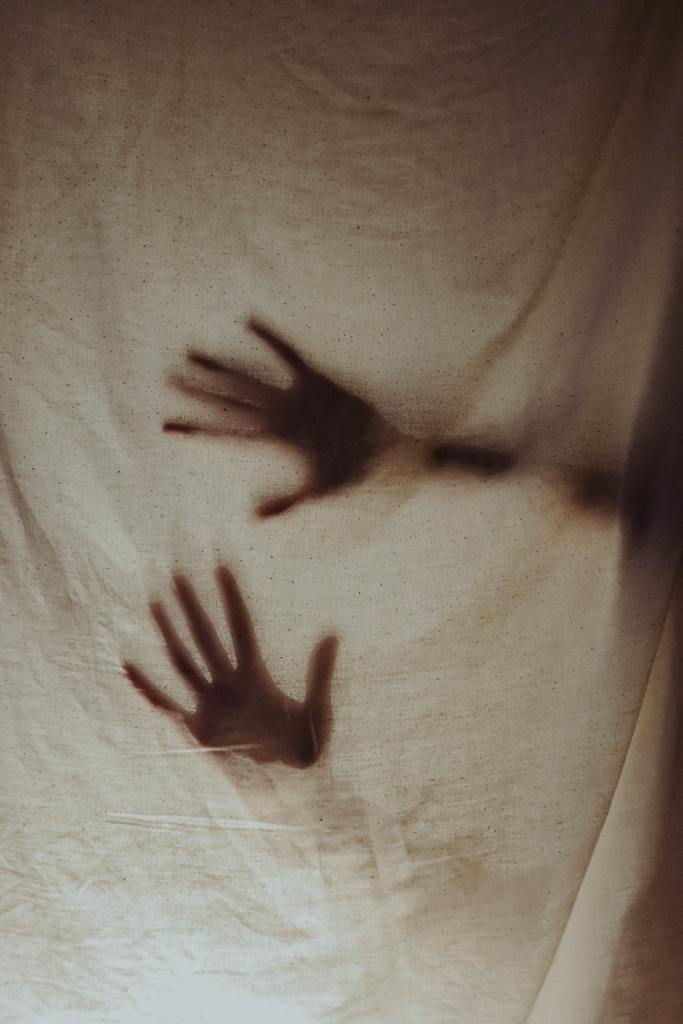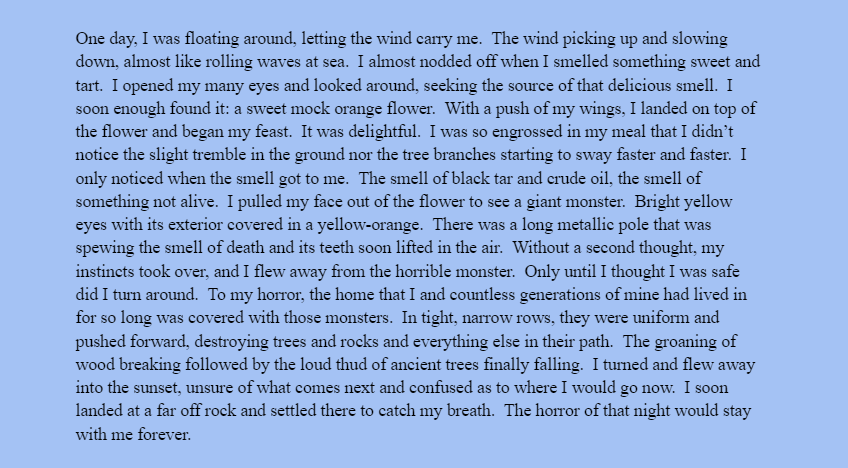
In last month’s post, I described how writing flash stories helped my students process the contents of an informational text. As we turned to a news article about a disturbed landscape, I wondered: How could recasting the details of a news article in the form of a flash ghost story help students understand its implications? We recently read a constellation of flash stories that helped us contemplate how stories of loss and disappearance contain the vestiges of what is no longer here:
- “On Rannoch Moor” by Audrey Niven
- “It’s Shaped Like a Grin, They Say” by K.C. Mead-Brewer
- “Eulogy” by Dina L. Relles
These flash stories are far more subtle than a camp horror jump scare: they cleverly model how to build in an implied ending, invoke the oft-repeated details of an urban legend, and employ an object that comes to symbolize everything a life can represent. They were on my mind as I chose an older news article focused on a nature preserve that is home to endangered species and currently faces challenges to its continued safe operation.
As we discussed the three-year-old NPR article about a threatened butterfly center near the U.S.-Mexico border due to border wall construction, we thought about what it meant to consume the news from an environmental lens. My students knew discussing the border wall was a politically charged topic, but they were unaware that walls erected in the name of national security have significant consequences for biodiversity. Thinking about the wall from an environmental lens means considering how walls and fences built on the borderland conservation hotspots crisscrossing the U.S.-Mexico border can threaten a species’ ability to maintain a migration route or to navigate an increasingly fragmented and degraded habitat. When we consider the consequences of human disruptions to landscapes, we think about both the visible and invisible signs of species and habitat loss. Writing ghost stories can help us acknowledge the way landscapes are haunted by the presence of non-human beings wrested from their homes due to human conflict and building encroachment.
After we read about the unwelcome border wall construction on the 100-acre butterfly center–home to endangered plant life and trails that are the natural habitat of more than 200 species of butterflies–I invited my students to write a flash ghost story set at this nature preserve. To do so, I encouraged them to think about the experience of non-human beings in this disturbed natural setting and to amplify details related to haunting and loss uncovered in the news article. My student J’s story can be found below:

Writing Noticings:
- the point of view of a butterfly
- “the haunted house”
- intergenerational awareness
While drafting, students are figuring out how to depict versions of being haunted as a result of some violence that has occurred, in the compressed space of a flash story. J immerses his readers by giving us the “butterfly’s-eye view” of what the butterfly is experiencing in the nature preserve, be it serenely floating by or seeking nectar from a “sweet mock orange flower” (a true favorite of our winged pollinators). The butterfly’s home is then disrupted by a tractor upending “ancient trees” with “its teeth soon lifted into the air.” J deftly moves from a description of the single tractor appearing monstrous to a collective image of a tractor row achieving brutal demolition of the butterfly haven. Beset with confusion and uncertainty, the butterfly is forced to flee as it mourns the loss of its home and the home of its ancestors.
Wildlife biologist Whitney Kroschel explains that shifting baseline syndrome “is perpetuated when each new generation perceives the environmental conditions in which they grew up as ‘normal.’” An alternative to normalizing wide-scale species and habitat loss is focusing on kinship with non-human beings and stabilizing “our baseline for a desirable state of our natural world.” The elasticity of the ghost story–the way a ghost story can stretch our sense of boundary between the living and the non-living, past and present–makes it a valuable resource for contemplating the permeability of boundaries and the factors accounting for such spectral blurriness. When my students write ghost stories, they are playing with clues and traces: they are figuring out how to incorporate clues gesturing to what has happened, as well as how to embed traces of a vital presence that once inhabited a now disturbed place.
-Xochitl
How do you help your students process the implications of informational texts? What has been your experience reading and writing flash fiction in the classroom? Share your reflections in the comments below or find me on Twitter @dispatches_b222.
At Moving Writers, we love sharing our materials with you, and we work hard to ensure we are posting high-quality work that is both innovative and practical. Please help us continue to make this possible by refraining from selling our intellectual property or presenting it as your own. Thanks!
